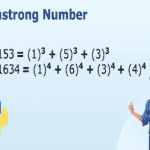Summary: Machine Learning interview questions cover a wide range of topics essential for candidates aiming to secure roles in Data Science and Machine Learning. These interview questions for Machine Learning delve into foundational concepts like supervised and unsupervised learning, model evaluation techniques, and algorithm optimization. Employers seek candidates who can demonstrate their understanding of key machine learning algorithms. Such as linear regression, decision trees, and neural networks. Answers should showcase practical knowledge, problem-solving skills, and the ability to communicate complex ideas clearly. Preparing for machine learning interviews involves studying algorithms, practicing coding exercises, and being able to discuss real-world applications of Machine Learning techniques.
Machine Learning interview questions
Machine Learning interviews can be daunting, but with the right preparation, you can confidently navigate through them. In this guide, we’ll explore a variety of Machine Learning interview questions, providing detailed answers and insights to help you succeed in your next interview.
Understanding Machine Learning
Machine Learning is a subset of Artificial Intelligence that enables systems to learn from data and improve over time without being explicitly programmed. It’s revolutionizing various industries, from healthcare to finance, by enabling computers to learn from large datasets and make predictions or decisions based on that data.
ML interview questions for freshers
Machine Learning engineering interview questions for freshers
1. What is Machine Learning?
Machine Learning is a subset of Artificial Intelligence that involves the development of algorithms and statistical models that enable computers to perform tasks without explicit instructions. Instead, these algorithms learn from data, identify patterns, and make decisions or predictions.
2. What are the main types of Machine Learning?
The main types of Machine Learning are supervised learning, unsupervised learning, and reinforcement learning. In supervised learning, algorithms learn from labelled data and make predictions or decisions based on that data.
Unsupervised learning involves discovering patterns and structures in unlabeled data. Reinforcement learning involves an agent learning to make decisions by interacting with an environment to maximize cumulative rewards.
3. What is overfitting in Machine Learning?
Overfitting occurs when a Machine Learning model learns the detail and noise in the training data to the extent that it negatively impacts the model’s performance on new data.
Essentially, the model becomes too specialized to the training data and fails to generalize well to unseen data.
4. What is the difference between classification and regression?
Classification and regression are two types of supervised learning tasks. Classification involves predicting a discrete category or label, while regression involves predicting a continuous value.
For example, predicting whether an email is spam or not is a classification task. Whereas predicting house prices is a regression task.
5. What is the bias-variance tradeoff?
The bias-variance tradeoff is a fundamental concept in Machine Learning that describes the balance between a model’s bias and variance.
Bias refers to the error introduced by approximating a real-world problem with a simplified model. While variance refers to the model’s sensitivity to fluctuations in the training data.
A model with high bias tends to underfit the data, while a model with high variance tends to overfit the data. Achieving an optimal balance between bias and variance is essential for building a well-performing Machine Learning model.
Machine Learning engineering questions for professionals
1. Explain the difference between L1 and L2 regularization.
L1 and L2 regularization techniques use to prevent overfitting in Machine Learning models by adding a penalty term to the loss function.
L1 regularization adds the sum of the absolute values of the coefficients to the loss function, promoting sparsity and feature selection.
L2 regularization adds the sum of the squared values of the coefficients to the loss function. Which tends to enforce smaller weights across all features without necessarily eliminating any.
L2 regularization also known as ridge regularization, while L1 regularization is known as Lasso regularization.
2. What is the curse of dimensionality, and how does it affect Machine Learning algorithms?
The curse of dimensionality refers to the phenomena encountered when working with high-dimensional data, where the volume of the data increases exponentially with the number of dimensions.
This can lead to several challenges for Machine Learning algorithms, including increased computational complexity, sparse data distribution, and the risk of overfitting. Due to the increased number of features relative to the number of observations.
Techniques such as feature selection, dimensionality reduction, and regularization are often employe to mitigate the effects of the curse of dimensionality.
3. What are ensemble learning methods, and why are they effective?
Ensemble learning methods involve combining multiple base learners to build a stronger predictive model. Examples of ensemble methods include bagging, boosting, and stacking.
Ensemble methods are effective because they can reduce overfitting, improve generalization performance, and increase robustness by leveraging the diversity of base learners.
By combining the predictions of multiple models, ensemble methods can capture complex patterns in the data that may be miss by individual models.
4. Explain the difference between batch gradient descent, stochastic gradient descent, and mini-batch gradient descent.
Batch gradient descent computes the gradient of the cost function with respect to the parameters using the entire training dataset in each iteration.
Stochastic gradient descent (SGD) updates the parameters using the gradient computed from a single randomly chosen training example at each iteration, making it faster but more noisy compared to batch gradient descent.
Mini-batch gradient descent is a compromise between batch gradient descent and SGD. Where the gradient is computed using a small random subset of the training data called a mini-batch. Mini-batch gradient descent combines the efficiency of SGD with the stability of batch gradient descent and is commonly used in practice for training deep learning models.
5. What is the ROC curve, and how is it used to evaluate classifier performance?
The Receiver Operating Characteristic (ROC) curve is a graphical representation of the performance of a binary classifier across different threshold settings. It plots the true positive rate (sensitivity) against the false positive rate (1-specificity) for various threshold values.
The area under the ROC curve (AUC) is a commonly use metric to evaluate the overall performance of a classifier, where a higher AUC indicates better discrimination ability.
The ROC curve allows for visual comparison of different classifiers and threshold settings and is especially useful for imbalanced datasets where the class distribution is skewed.
Conclusion
Preparing for a Machine Learning interview requires a solid understanding of key concepts, algorithms, and techniques. By familiarizing yourself with common Machine Learning interview questions and practising your responses. You can approach your next interview with confidence and increase your chances of success.
Now that you’re equipped with insights into Machine Learning interview questions, take the time to review and practice your answers. With Machine Learning interview preparation and practice, you’ll be well-prepare to showcase your expertise and ace your next Machine Learning interview.
Start your learning journey with Pickl.AI’s free ML101 course
If you are looking forward to upskilling your knowledge base and are willing to learn about ML in-depth, this free Machine Learning course by Pickl.AI is your best take. The course covers all the core concepts of Machine Learning that will help you master the fundamentals of Machine Learning.









